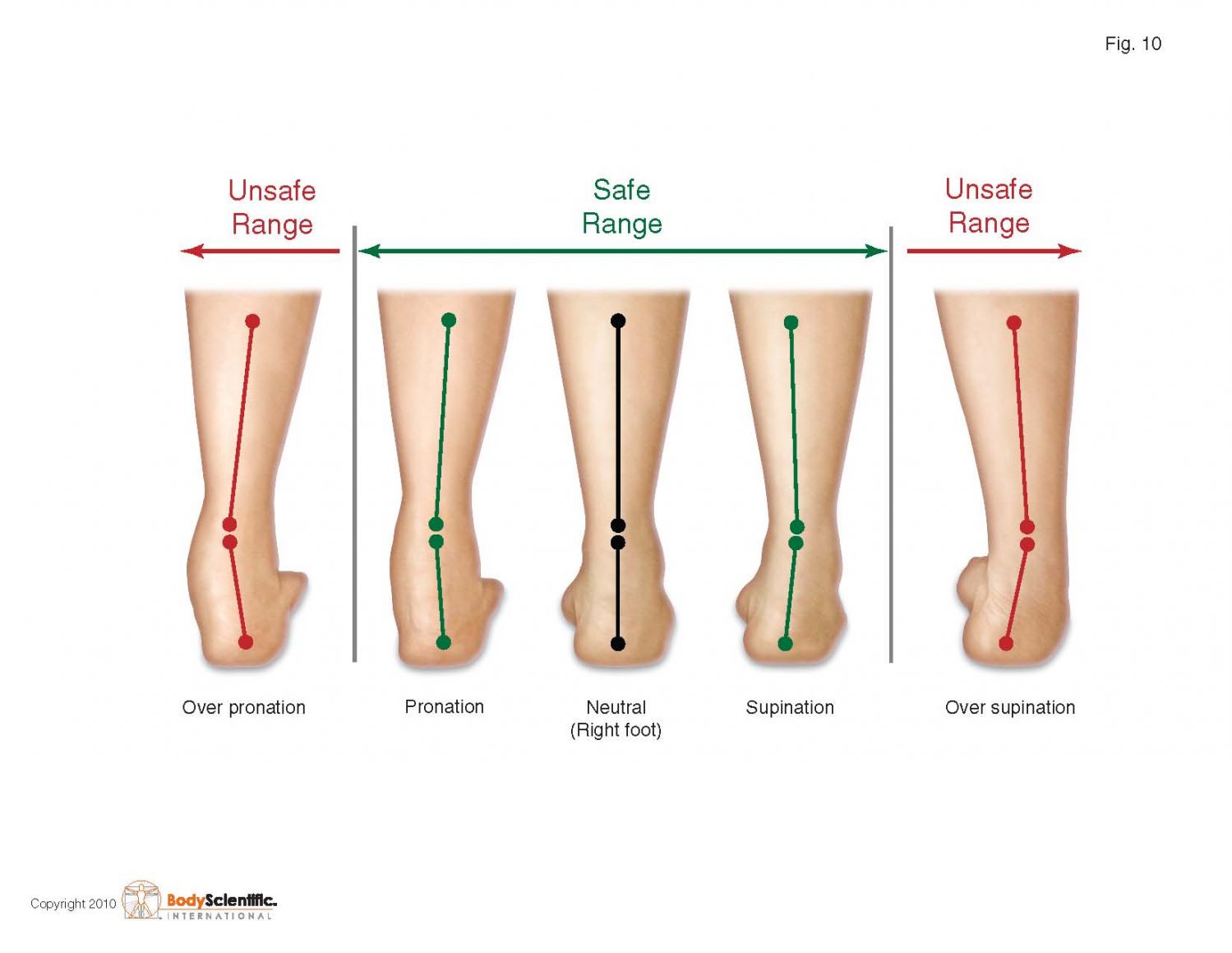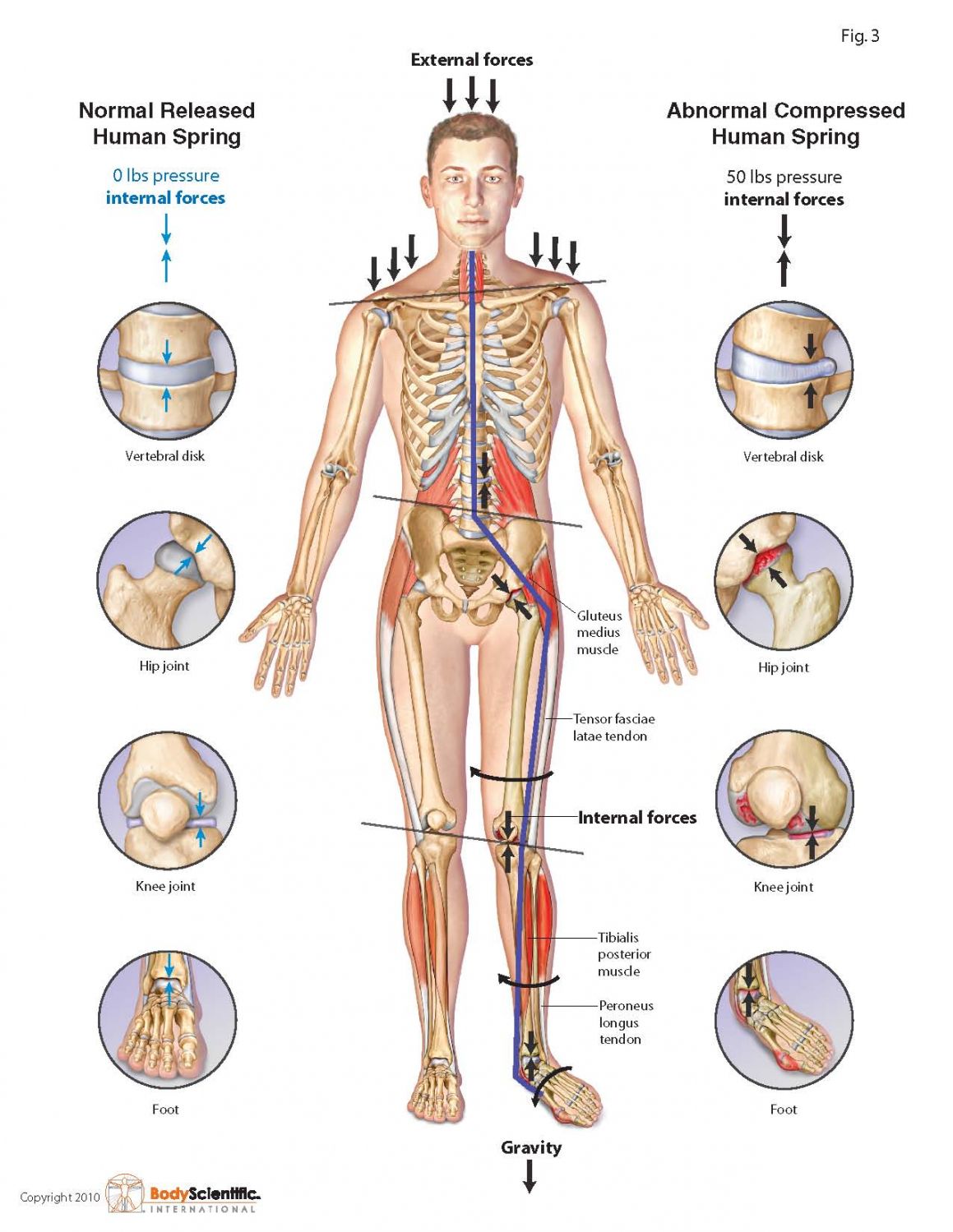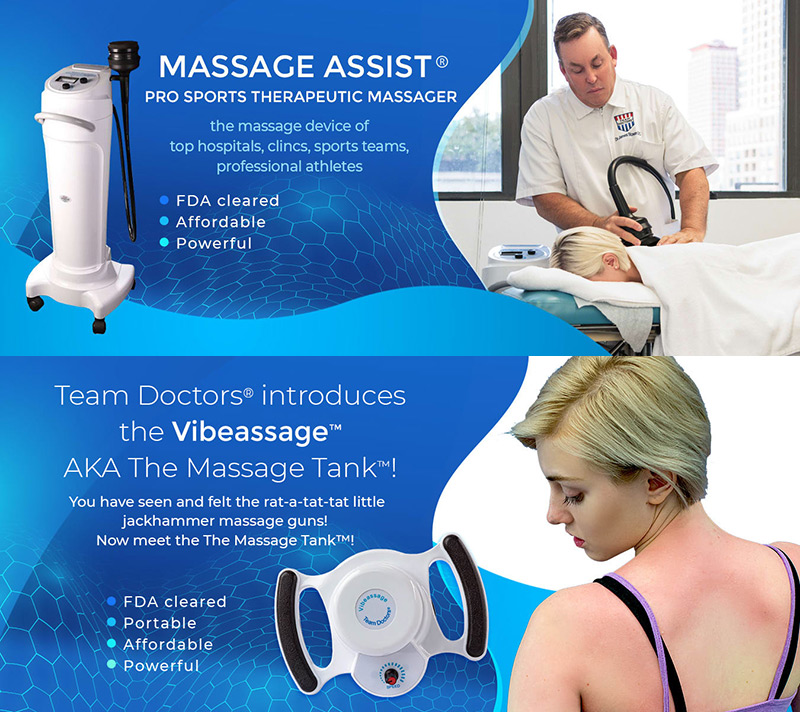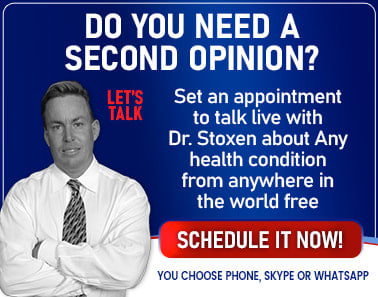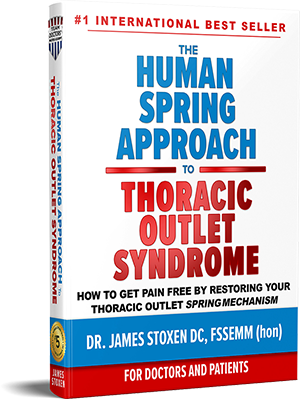Chondromalacia Patella ICD-9 733.92
Chondromalacia Patella / Cracking Knees or Runners Knee, Knee Cap Pain! Treatment and Prevention Tips from The Barefoot Running Doctor
Tips For Better Health
Ask the doctor, Dr James Stoxen DC
Do you experience knee pain when running?
Do you have knee pain when bending?
Does your knees crack when going up the stairs?
You may have what athletes call Runners Knee, what non-athletes call Cracking Knees and what doctors call, Chondromalacia Patella.
I have found the usual cause of this infra patellar pain is an abnormal foot plant.
To view the original post, click here
Question:
I haven’t run in weeks and i decided to go out for a jog. Ended up doing 5k and giving up before my knee gave out.
Should I be running that much? Maybe i should be doing 1k a day and start building up?
What do you think is the best way to recover from this? And to eventually raise mileage to marathon training. (in long future of course)
Dr. Stoxen’s Answer:
I’m assuming you are talking about pain under, below or around the knee cap. This can be called chondromalacia patella or cracking knee. You may hear it crack or click more often when you go up the stairs.
As you know, the patella is a pulley mechanism (see picture to the right). The trochlear groove is the concave surface where the patella (kneecap) makes contact with the femur (thighbone). Also called the ‘trochlea’.The foot adjusts for the impacts of running with two main spring mechanisms:
1. The Arch Leaf Spring – There have been studies on the arch with all muscles removed leaving just the bones and ligaments. These were extracted from cadavers. What the study showed was that the arch complex itself has the ability to spring back forces without the aid of the muscles.
“If any of these 33 joints are locked then the foot cannot absorb the impact force smoothly. The foot will either roll into over supination or over pronation to compensate to roll around these locked joints.”, Dr. James Stoxen DC
2. The Spring Suspension System Muscles – I coined these muscles as the spring suspension system muscles, the landing muscles or the pronation-supination cuff muscles. When this happens the impact is received as a “negative” by the tendons of the landing muscles.
“If any of these muscles and tendons are too weak to handle the impact force, the foot can roll into over supination or over pronation.”, Dr. James Stoxen DC
In my model the body moves as a lever and a spring
The foot rolls from supination to pronation. Have you ever heard of over pronation? That is when the foot rolls too far inward. When this happens, the limb internally rotates on impact. For more information read this article: What Is Foot Pronation And Foot Supination? Is It Good Or Bad?
That does not put the patella in a good position to allow for stress and strain free motion.
Therefore, if the foot rolls outside the safe range (green–black–green) then the limb rolls in or outside the safe range this causes the knee to be in a position where the knee cap will grind against the pulley mechanism gro0ve (trochlear gro0ve) This can cause irritation to the cartilage, inflammation and pain.
Not only that but this misalignment of the limb can cause spasms of the muscles from toe to head. The reason is because the body senses the abnormal movement of the limb and reacts with a spasm called a “tonic protective spasm”.
This can lead to various changes in the knee and other joints that make runners uncomfortable and unhappy…..
- When muscles spasm on many sides of a joint it cause inhibition of others opposite them called reflexive inhibition. That is a fancy term for shutting down muscles. Sometimes we feel our leg go out from under us in a split second.
- Since the abnormal movement pattern starts at the foot and goes to the head it can compress every joint from foot to head. This can cause abnormal internal compressive forces on not only the knee but the arch, ankle, knee, hip and spinal discs.
What we do is a gait evaluation to check how your foot is landing and how it interacts with earth
How does it land…
- Does it land with the second toe towards the target, pointing inward or pointing outward?
- Does the foot bang when it lands and twist when its lifting off or does it spring down and up?
The intricacies or nuances of how your foot lands during walking or running can be difficult to see when you are moving so quickly. Also, if you have never studied walking or running forms and technique it’s difficult to pick up the details. I still urge you to study your walk and running form and technique so you can get a better feel for how your body is interacting or impacting the earth and how to improve it.
The reason is because your body will impact with the earth 270,000,000 or so times in a lifetime.
- what shoes you wear outside running training – a poorly constructed shoe can be used for 6 months adding up to 1,850,000 abnormal movements burning the pattern into your brain for a poor landing in running.
- a stressful time in your life – stress causes people to tense up the entire body leading to more of a bang and twist running impact rather than a spring and roll running impact
How to do your own gait evaluation:
- Get a $140 HD flip video camera.
- Video yourself walking barefoot 10 steps toward the camera and back. Do this while walking, fast walking, and running.
- Download it
- Watch the video frame by frame to see how the foot lands and you will see why the patella is not in the groove. It is obvious and enlightening.
Here is a blog post you may like that talks about “foot lock”, which is when joints of the foot are locked causing abnormal movement patterns (compensations) which effect patella position and a lot more! click here to view
Next, I developed a 3 step self-help approach to helping align the foot on impact and improve the spring loading capacity of the limb. The three steps to my human spring approach are:
- Release the stiffness or locking of the joints of the spring mechanism so the muscles can pull through full range of motion to maximize development.
- Strengthen the pronation supination cuff, landing muscles AKA spring suspension muscles with lever resistance exercises.
- Strengthen the pronation supination cuff, landing muscles AKA spring suspension muscles with spring impact exercises.
This three step approach will help you expand the force loading capacity of your human spring to better spring off from impacts, to have maximum performance and reduce risk of injury.
In running as you know there is simplistically the “take off” and the “landing”
When you run with braces (shoes), your body has an artificial support and an artificial landing gear that most think will keep the foot centered. You know that the muscles to do that.
This is what is unique and cool about barefoot running training is:
- When you are barefoot running you aren’t copping out on strengthening by putting a brace on your foot to try to hold it in the safe range like a motion control shoe or an orthotic like the doctors who can’t get their runners out of their braces recommend. You really have no choice but to strengthen the landing gear so that the muscles will maintain your foot in the safe range.
- When you are barefoot running you don’t have the artificial spring (cushioned sole) to absorb the impact like the doctors who recommend more cushion so you really have to have a springy foot. While it might seem like heavily-cushioned shoes would be the answer, they are in fact, likely doing more damage as they dramatically affect the arch spring’s ability to appropriately absorb, store, then release the energy from each step.
- When you train in multiple direction movements you can get your foot in many other landing configurations which stimulate more muscle development through adaptation to create a stronger landing gear.
Rather than strapping five-inch ‘pillows’ to your feet, the best solution is to repair the spring mechanism in the arches by following the procedures and exercises in this article.
Most runners strengthen the take off muscles thinking the artificial support and think that their artificial landing gear (shoe cushion) will do the trick. We all know the majority of injuries occur in the landings
The key is to strengthen the muscles that resist the over rolling of the foot outside the “safe range between supination to pronation (rolling from the outside to the inside) during impacts. If the foot rolls to an unsafe position then the knee rolls to an unsafe position.
Logical so far?
I call these muscles the landing muscles, the spring suspension system muscles or the pronation supination cuff muscles
Introducing… The Pronation Supination Cuff Training
The muscles that prevent over pronation and over supination of the foot consist of the tibialis posterior, tibialis anterior, peroneus longus, and peroneus brevis.
The strength of these muscles, supination and pronation as well as the spring suspension system are not covered much in bodybuilding, fitness magazines, training routines etc., but of all the muscles, in fact these are THE most important muscles in the body to work.
Why?
- These muscles suspend your foot as a leaf spring so it can bounce your body off the ground instead of bang your body into the ground.
- They store FREE elastic energy when your mass impacts the ground when they stretch. This storage of energy is what allows your body to move more efficiently as a spring mechanism rather than an inefficient lever mechanism.
- These muscles, which I also refer to the pronator supinator cuff muscles, maintain the foot and lower limb in the safe range between supination and pronation
Below are my last two articles you might find helpful to release the tension on the spring and strengthen the landing gear muscles so that your limb will land straight, spring off the ground with the knee cap and other joints in good alignment with little to no abnormal compressive forces as the goal.
How Does The Body Spring Back Safely From Impacts Of Running and Walking?, click here to view
Self-Tests & Exercises To Reduce Over Pronation and Over Supination From Impacts During Walking and Running, click here to view
I recommend you do the Human Spring release exercises, video tutorials #77 – 89 on my before every run and when you take off your shoes at night, see below:
Video Tutorial #84 Dr James Stoxen DC Demonstrates Scissor Stretching Of The Feet
Video Tutorial #86 Dr James Stoxen DC Recommends The Best Shoes To Prevent The Foot From Deforming
Video Tutorial #87 Dr James Stoxen DC Demonstrates Self-Help Deep Tissue Of The Ankle Mortise
The key training I do to strengthen my landing gear is run the entire training session in zig zag patterns
Watch this video below to see two time Taekwondo National Champion Christian Medina and Dr. Stoxen run barefoot in zig zag patterns.
I also suggest you read Anthony Field’s book, How I My Wiggle Back. He is an entertainer who followed my approach and it helped him change his life. The book has over 200 tips for you in the 100 pages of content that are on the Human Spring Approach.
Be sure to check out The Barfoot Runners Society to learn more about barefoot running and find a chapter near you., click here
#ff0000; font-size: medium;”>Like this article? We will send the next one to you.
Register for our updates below:
Disclaimer
All content on teamdoctorsblog.com, including without limitation text, graphics, images, advertisements, videos, and links (“Content”) are for informational purposes only. The Content is not intended to be a substitute for professional medical treatment, advice, or diagnosis. Please remember to always seek the advice of a qualified physician or health professional with any questions you may have regarding any medical concerns. Dr James Stoxen DC and Team Doctors does not recommend or endorse any specific treatments, physicians, products, opinions, research, tests, or other information it mentions. Said Content is also not intended to be a substitute for professional legal or financial advice. Reliance on any information provided by Team Doctors is solely at your own risk.
- Fever: When you have a fever, your body is trying to isolate and expel an invader of some kind. Massage increases overall circulation and could therefore work against your body’s natural defenses.
- Inflammation: Massage can further irritate an area of inflammation, so you should not administer it. Inflamed conditions include anything that ends in itis, such as phlebitis (inflammation of a vein), dermatitis (inflammation of the skin), arthritis(inflammation of the joints), and so on. In the case of localized problems, you can still massage around them, however, avoiding the inflammation itself.
- High blood pressure: High blood pressure means excessive pressure against blood vessel walls. Massage affects the blood vessels, and so people with high blood pressure or a heart condition should receive light, sedating massages, if at all.
- Infectious diseases: Massage is not a good idea for someone coming down with the flu or diphtheria, for example, and to make matters worse, you expose yourself to the virus as well.
- Hernia: Hernias are protrusions of part of an organ (such as the intestines) through a muscular wall. It’s not a good idea to try to push these organs back inside. Surgery works better.
- Osteoporosis: Elderly people with a severe stoop to the shoulders often have this condition, in which bones become porous, brittle, and fragile. Massage may be too intense for this condition.
- Varicose veins: Massage directly over varicose veins can worsen the problem. However, if you apply a very light massage next to the problem, always in a direction toward the heart, it can be very beneficial.
- Broken bones: Stay away from an area of mending bones. A little light massage to the surrounding areas, though, can improve circulation and be quite helpful.
- Skin problems: You should avoid anything that looks like it shouldn’t be there, such as rashes, wounds, bruises, burns, boils, and blisters, for example. Usually these problems are local, so you can still massage in other areas.
- Cancer: Cancer can spread through the lymphatic system, and because massage increases lymphatic circulation, it may potentially spread the disease as well. Simple, caring touch is fine, but massage strokes that stimulate circulation are not.Always check with a doctor first.
- Other conditions and diseases: Diabetes, asthma, and other serious conditions each has its own precautions, seek a doctor’s opinion before administering massage.
- Pregnancy: No deep tissue work. Be aware: danger of triggering a miscarriage by strong myofascial work is greatest during the first 3 months (especially through work around the pelvis, abdomen, adductors, medial legs, or feet)


